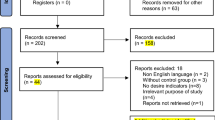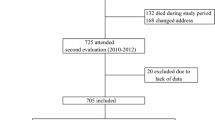Abstract
Background and aims: Hypovitaminosis D and K due to malnutrition or sunlight deprivation, compensatory hyperparathyroidism, increased bone resorption, low bone mineral density (BMD), and an increased risk of falls may contribute to an increased risk of hip fractures in patients with Alzheimer’s disease. The purpose of the present study was to clarify the efficacy of interventions against hip fractures in patients with Alzheimer’s disease. Methods: With respect to randomized controlled trials (RCTs) regarding Alzheimer’s disease and hip fractures, the literature was searched with PubMed. Results: Three RCTs were identified, and the relative risk (RR) and 95% confidence interval (CI) were calculated for individual RCTs. Exposure to sunlight with calcium supplementation, menatetrenone (vitamin K2) plus calcium and vitamin D supplementation, and risedronate plus calcium and vitamin D supplementation improved hypovitaminosis D and hyperparathyroidism, contributing to a reduction in bone resorption. Risedronate itself strongly decreased bone resorption. Menatetrenone also decreased the serum level of undercarboxylated osteocalcin. The three interventions increased metacarpal BMD and reduced the incidence of hip fractures. The respective RRs (95% CI) were 0.22 (0.049–0.999), 0.13 (0.031–0.554), and 0.26 (0.100–0.690). Conclusions: The present study clarified the efficacy of three interventions, including exposure to sunlight, menatetrenone, and risedronate with calcium and/or vitamin D supplementation against hip fractures in patients with Alzheimer’s disease.
Similar content being viewed by others
Change history
05 June 2018
The Editor-in-Chief has retracted this article [1] because the three studies included in the meta-analysis [2,3 and 4] (cited as references 16, 17 and 18) have been retracted due to concerns regarding the data, which has rendered the results of this meta-analysis invalid.
References
Scafato E, Gandin C, Farchi G et al. Italian Project on Epidemiology of Alzheimer’s disease (I.PR.E.A.): Study design and methodology of cross-sectional survey. Aging Clin Exp Res 2005; 17: 29–34.
Bianchetti A, Ranieri P, Margiotta A, Trabucchi M. Pharmacological treatment of Alzheimer’s Disease. Aging Clin Exp Res 2006; 18: 158–62.
Johansson C, Skoog I. A population-based study on the association between dementia and hip fractures in 85-year olds. Aging Clin Exp Res 1996; 8: 189–96.
Melton LJ III, Beard CM, Kokmen E, Atkinson EJ, O’Fallon WM. Fracture risk in patients with Alzheimer’s disease. J Am Geriatr Soc 1994; 42: 614–9.
van Staa TP, Leufkens HG, Cooper C. Utility of medical and drug history in fracture risk prediction among men and women. Bone 2002; 31: 508–14.
Buchner DM, Larson EB. Falls and fractures in patients with Alzheimer-type dementia. JAMA 1987; 257: 1492–5.
Weller I, Schatzker J. Hip fractures and Alzheimer’s disease in elderly institutionalized Canadians. Ann Epidemiol 2004; 14: 319–24.
Nurmi I, Narinen A, Luthje P, Tanninen S. Cost analysis of hip fracture treatment among the elderly for the public health services: a 1-year prospective study in 106 consecutive patients. Arch Orthop Trauma Surg 2003; 123: 551–4.
Holmes J, House A. Psychiatric illness predicts poor outcome after surgery for hip fracture: a prospective cohort study. Psychol Med 2000; 30: 921–9.
Matsueda M, Ishii Y. The relationship between dementia score and ambulatory level after hip fracture in the elderly. Am J Orthop 2000; 29: 691–3.
Morrison RS, Siu AL. Mortality from pneumonia and hip fractures in patients with advanced dementia. JAMA 2000; 284: 2447–8.
Nightingale S, Holmes J, Mason J, House A. Psychiatric illness and mortality after hip fracture. Lancet 2001; 357: 1264–5.
Sato Y, Kanoko T, Satoh K, Iwamoto J. Risk factors for hip fracture among elderly patients with Alzheimer’s disease. J Neurol Sci 2004; 223: 107–12.
Sato Y, Asoh T, Oizumi K. High prevalence of vitamin D deficiency and reduced bone mass in elderly women with Alzheimer’s disease. Bone 1998; 23: 555–7.
Sato Y, Honda Y, Hayashida N, Iwamoto J, Kanoko T, Satoh K. Vitamin K deficiency and osteopenia in elderly women with Alzheimer’s disease. Arch Phys Med Rehabil 2005; 86: 576–81.
Sato Y, Iwamoto J, Kanoko T, Satoh K. Amelioration of osteoporosis and hypovitaminosis D by sunlight exposure in hospitalized, elderly women with Alzheimer’s disease: a randomized controlled trial. J Bone Miner Res 2005; 20: 1327–33.
Sato Y, Kanoko T, Satoh K, Iwamoto J. Menatetrenone and vitamin D2 with calcium supplements prevent nonvertebral fracture in elderly women with Alzheimer’s disease. Bone 2005; 36: 61–8.
Sato Y, Kanoko T, Satoh K, Iwamoto J. The prevention of hip fracture with risedronate and ergocalciferol plus calcium supplementation in elderly women with Alzheimer disease: a randomized controlled trial. Arch Intern Med 2005; 165: 1737–42.
Epstein S. Is cortical bone hip? What determines cortical bone properties? Bone 2007; 41 (Suppl 1): S3–8.
Iwamoto J, Sato Y, Takeda T, Matsumoto H. Hip fracture protection by alendronate treatment in postmenopausal women with osteoporosis: a review of the literature. Clin Inter Aging 2008; 3: 1–7.
Hochberg MC, Greenspan S, Wasnich RD, Miller P, Thompson DE, Ross PD. Changes in bone density and turnover explain the reductions in incidence of nonvertebral fractures that occur during treatment with antiresorptive agents. J Clin Endocrinol Metab 2002; 87: 1586–92.
Beadle PC. Sunlight, ozone and vitamin D. Br J Dermatol 1977; 97: 585–91.
Lester E, Skinner RK, Foo AY, Lund B, Sorensen OH. Serum 25-hydroxyvitamin D levels and vitamin D intake in healthy young adults in Britain and Denmark. Scand J Clin Lab Invest 1980; 49: 145–50.
Sato Y, Inose M, Higuchi I, Higuchi F, Kondo I. Changes in the supporting muscles of the fractured hip in elderly women. Bone 2002; 30: 325–30.
Bischoff-Ferrari HA, Dawson-Hughes B, Willett WC et al. Effect of vitamin D on falls: a meta-analysis. JAMA 2004; 291: 1999–2006.
Bischoff-Ferrari HA, Willett WC, Wong JB, Giovannucci E, Dietrich T, Dawson-Hughes B. Fracture prevention with vitamin D supplementation: a meta-analysis of randomized controlled trials. JAMA 2005; 293: 2257–64.
Szulc P, Chapuy MC, Meunier PJ, Delmas PD. Serum undercarboxylated osteocalcin is a marker of the risk of hip fracture in elderly women. J Clin Invest 1993; 91: 1769–74.
Szulc P, Chapuy MC, Meunier PJ, Delmas PD. Serum undercarboxylated osteocalcin is a marker of the risk of hip fracture: a three-year follow-up study. Bone 1996; 18: 487–8.
Vergnaud P, Garnero P, Meunier PJ, Breart G, Kamihagi K, Delmas PD. Undercarboxylated osteocalcin measured with a specific immunoassay predicts hip fracture in elderly women: the EPIDOS Study. J Clin Endocrinol Metab 1997; 82: 719–24.
Knapen MH, Schurgers LJ, Vermeer C. Vitamin K2 supplementation improves hip bone geometry and bone strength indices in postmenopausal women. Osteoporos Int 2007; 18: 963–72.
Runge M, Hunter G. Determinants of musculoskeletal frailty and the risk of falls in old age. J Musculoskelet Neuronal Interact 2006; 6: 167–73.
Author information
Authors and Affiliations
Corresponding author
Additional information
The Editor-in-Chief has retracted this article because the three studies included in the meta-analysis (cited as references 16, 17 and 18) have been retracted due to concerns regarding the data, which has rendered the results of this meta-analysis invalid.
About this article
Cite this article
Iwamoto, J., Sato, Y., Tanaka, K. et al. RETRACTED ARTICLE: Prevention of hip fractures by exposure to sunlight and pharmacotherapy in patients with Alzheimer’s disease. Aging Clin Exp Res 21, 277–281 (2009). https://doi.org/10.1007/BF03324916
Received:
Accepted:
Published:
Issue Date:
DOI: https://doi.org/10.1007/BF03324916




